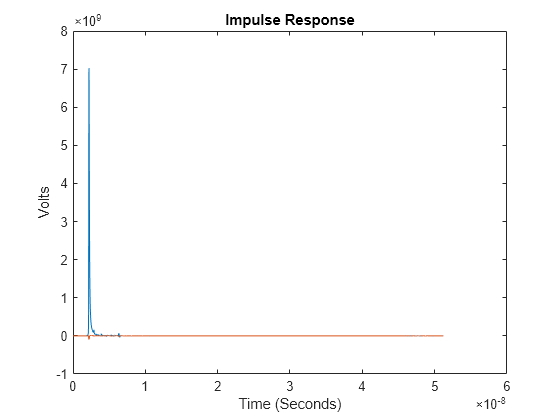pulse2impulse
Impulse response from pulse response
Description
I = pulse2impulse(P,N,dt)P to an impulse response
I, given the number of samples per symbol N and
uniform sampling interval dt.
The function computes the step response from the pulse response. The derivative of the pulse response is the impulse response.
The function calculates the derivative with zero delay and is reasonably accurate upto one half of the Nyquist rate. But at the Nyquist rate, the derivative calculation diverges rapidly back to zero.
Examples
Input Arguments
Output Arguments
Extended Capabilities
Version History
Introduced in R2020a
